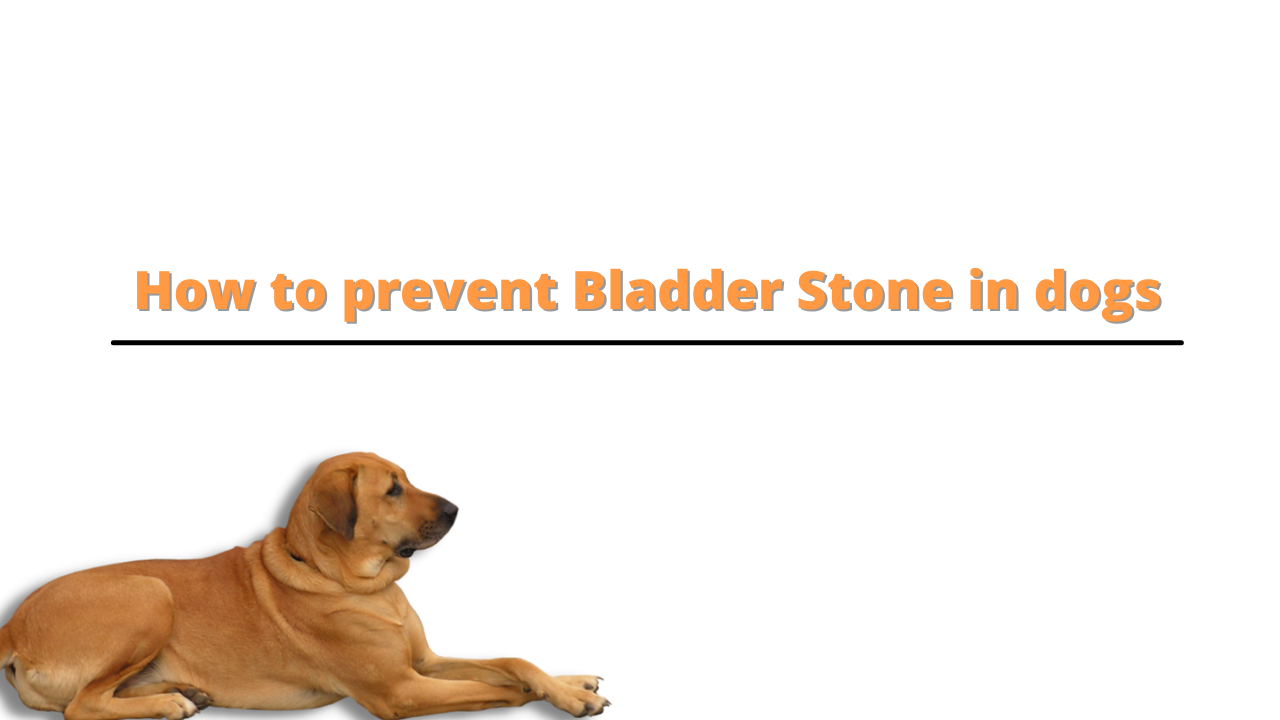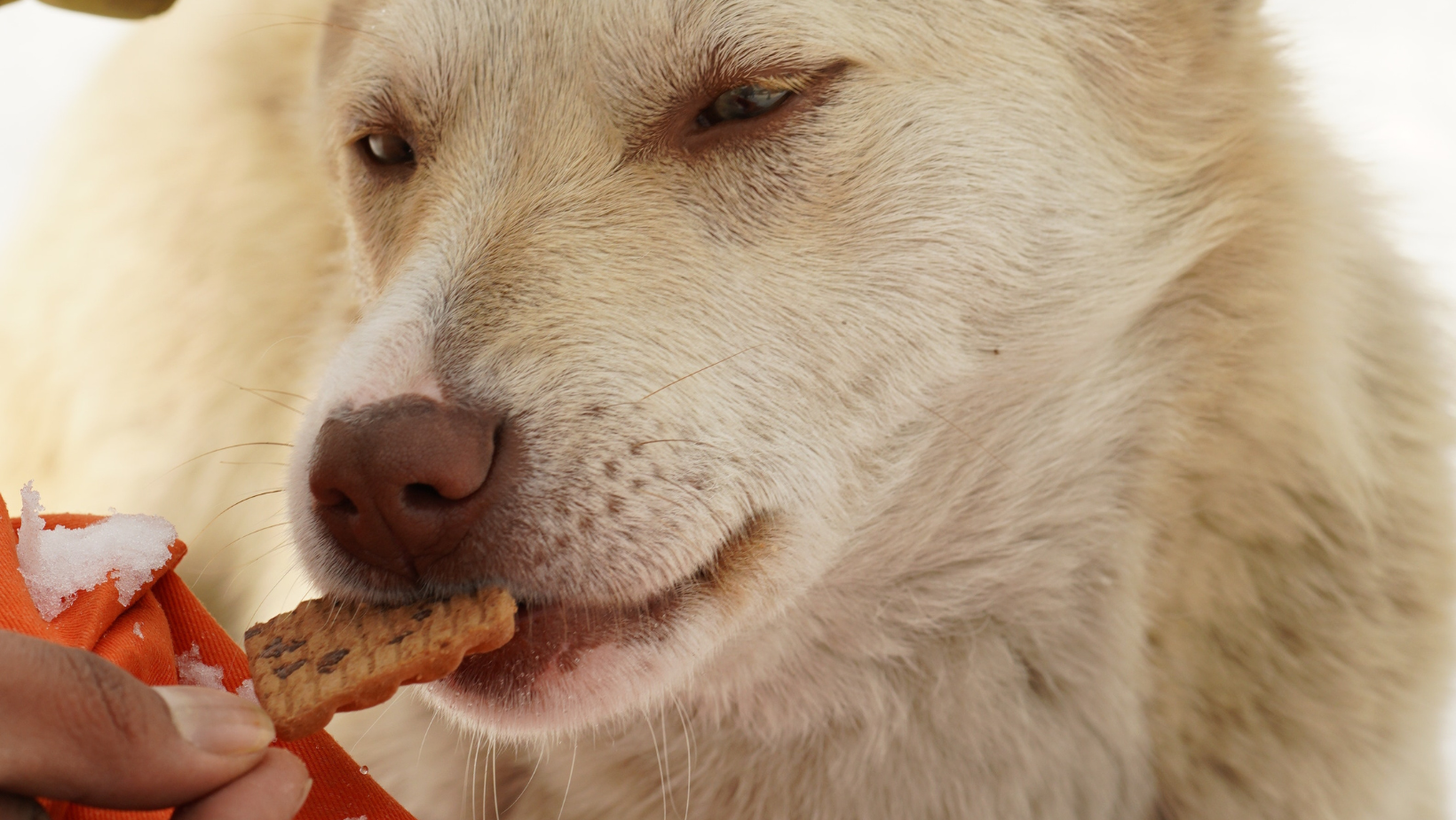How to prevent Bladder Stone in dogs


Bladder stones (also known as uroliths or cystic calculi) are mineral-rich rock-like formations that occur in the urine bladder. They are more common in dogs than kidney stones. Magnesium ammonium phosphate hexahydrate is one of the most prevalent uroliths found in dogs. This sort of bladder stone is also known as a struvite bladder stone.
Where did these stones come from on the dog’s body?
Normal canine urine is slightly acidic, containing metabolic waste products such as dissolved mineral salts and other substances. Struvite is a natural component of dog urine that will dissolve if the urine is acidic and not excessively concentrated. Struvite crystals will settle or fall out of the solution if the urine becomes extremely concentrated or alkaline (as opposed to acidic). Struvite bladder stones develop in dogs as a result of a bladder infection caused by bacteria that generate the enzyme urease. This enzyme breaks down the urea typically present in the urine, resulting in an excess of ammonia production, which causes the urine to become alkaline. Bladder irritation is also caused by ammonia in the urine. Struvite crystals will precipitate out of solution in these settings and cluster around any cells or debris that may have grown in the bladder as a result of inflammation. Female dogs are more likely than males to develop bladder infections and stones, owing to their shorter, broader urethra (the tube that delivers urine from the bladder to the kidneys).
What is the prevalence of struvite bladder stones?
Bladder stones are rather frequent in dogs, with struvite being the most prevalent type. In clinical investigations, struvite was discovered in up to 26% of all bladder stones. Struvite and calcium oxalate uroliths make up over 85% of all uroliths, according to research. The quantity of struvite bladder stones has been falling in dogs while the amount of calcium oxalate stones has been growing, according to the findings of tens of thousands of stone analyses. Female dogs are more likely to have struvite uroliths, while male dogs are more likely to have calcium oxalate uroliths.
The symptoms of a simple bladder infection are remarkably similar. Hematuria (blood in the urine) and dysuria are the two most common symptoms of bladder stones in dogs (straining to urinate). The stones press against the bladder wall, hurting and injuring the tissue and producing bleeding. This results in hematuria. Dysuria can be caused by bladder or urethral irritation, muscle spasms, or a physical blockage to urine flow. Many clients comment on how much healthier and more active their dog becomes after the removal of bladder stones, thus veterinarians presume the condition is uncomfortable.
The symptoms of a simple bladder infection or cystitis are remarkably similar. Many clients comment on how much healthier and more lively their dog becomes Large stones can function as a valve or stopcock at the bladder’s neck, where the bladder connects to the urethra, producing intermittent or partial obstruction. Small stones may pass through the urethra with the urine and become trapped, causing a blockage. The bladder cannot be completely emptied during an obstruction. If the interruption is complete, the dog will be unable to urinate at all. The bladder may rupture if the impediment is not removed. A total obstruction is potentially fatal and necessitates prompt medical attention. Signs of struvite bladder stones Your veterinarian may be able to visually inspect struvite stones in the bladder if the dog is calm and the bladder is not too uncomfortable.
However, some stones are too small to be felt in this way. A radiograph (X-ray) of the bladder or ultrasound is frequently used to diagnose bladder stones. Struvite stones are mostly radiodense and may be detected on a radiograph. However, occasionally the ability to view bladder stones with ordinary X-rays is hampered by the presence of bones or other underlying body components, in which case your veterinarian may suggest a contrast study, a specialist procedure that utilizes dye to highlight the stones in the bladder, or a cystoscopy. These imaging modalities detect the existence of a bladder stone, but do not reveal the stone’s composition. A veterinary laboratory analysis is the only method to be certain if a bladder stone is formed of struvite. Based on the radiographic look and the results of a urinalysis, your veterinarian can make a guess regarding the sort of stone that is present. If X-rays reveal one or more stones in the bladder, and urinalysis reveals alkaline urine with multiple struvite crystals, the veterinarian can make a probable diagnostic of struvite bladder stones and prescribe treatment.
Treatment for struvite bladder stones
For struvite bladder stones, there are three main treatment options:
- eating a particular diet to break the stone(s),
- non-surgical removal using Uro hydro propulsion, and
- surgical removal.
Provide a proper diet to the pet- In cases where the risk of a urinary tract obstruction is low, special therapeutic meals to dissolve struvite bladder stones are frequently prescribed. These diets are somewhat low in protein, phosphorus, and magnesium, and are designed to encourage the production of acidic urine (with a pH of less than 6.5).
These formulations aid in the dissolution of struvite stones. As struvite bladder stones are most commonly caused by a bladder infection, your dog will be put on antibiotics while stones are being dissolved. This is critical because as the layers of stone break, bacteria that have become bound within them are discharged into the bladder. If these bacteria are not treated, this causes another infection. Struvite stones may dissolve in two weeks in some dogs, but might take up to 12 weeks in others. Throughout this time, antibiotics will be required for your dog. If your dog is given nutritional therapy to dissolve bladder stones, your veterinarian will advise you to have a urinalysis and bladder X-rays done every six months or so.
Non-surgical removal
If the bladder stones are very small it is possible to pass a special catheter into the bladder and then flush the stone out, in a technique called Uro hydro propulsion. If your veterinarian has a cystoscope, small stones in the bladder or urethra may removed with this instrument, without the need for surgery to access the bladder.
Surgical removal
Surgery is recommended for dogs with a vast number of stones in their bladder, if there is a high danger of the patient developing a urinary tract obstruction, or if the client wants the problem removed as soon as feasible. Because male dogs are at a considerably higher risk of getting a urinary tract obstruction as a consequence of bladder stones, your veterinarian will frequently strongly advocate surgical removal when bladder stones are discovered in a male dog. Surgery may be necessary if nutritional treatment has failed to remove the stones, or if the stones appear to be made up of a variety of mineral kinds. Your veterinarian will go over the best treatment options with you.
To avoid the dog from struvite bladder stones
Dogs with struvite bladder stones are frequently administered a remedial diet for the rest of their lives. Protein, phosphorus, and magnesium-deficient diets are recommended, as are diets that encourage acidic urine. The diet that promotes stone breakdown is NOT the same as the preventive diet. Medicines to acidify the urine may be indicated in some circumstances. In addition, regular urine screening is required on a regular basis to detect any signs of bacterial infection. Bladder X-rays and urinalysis should be done one month after nutritional or surgical treatment, and then every three to six months for the rest of life. Urinary tract infections in dogs can manifest themselves in a variety of ways, including frequent urination, peeing in strange areas, painful urination, or the appearance of blood in the urine. Keep in mind that a urinary tract infection is the most common cause of struvite bladder stones in dogs.





